1. Sydney Opera House and Harbour Bridge
The Sydney Opera House is known for its iconic sail-like structures. It is considered as one of the world’s most distinguished examples of 20th century architecture. Opened in 1973, the Sydney Opera House was built using the so-called Spherical Solution by Danish architect Jørn Utzon.
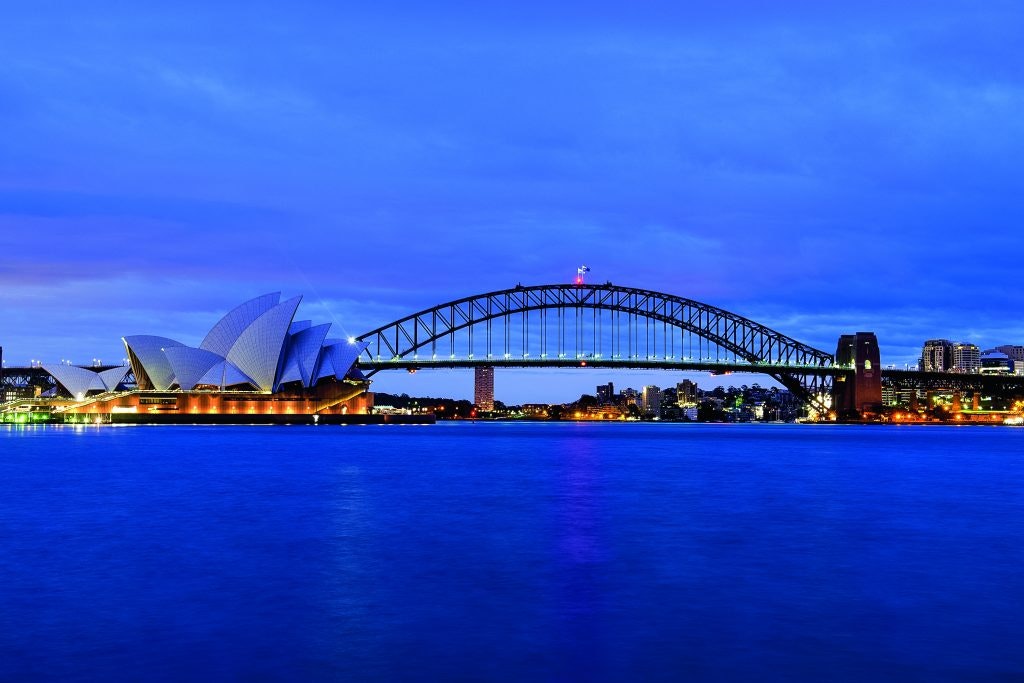
Copyright: Rustic Pathways
The curved, white roof of the Opera House resembles the billowing sails of ships and the geometric spirals of seashells. These nautical designs fit well with the building’s location in Sydney Harbour.
Hosting around 1,500 performances annually, the Sydney Opera House’s Concert Hall is one of the most iconic music venues in the world. The Opera House was designated a UNESCO World Heritage Site in 2007.
For panoramic views of the Opera House, why not climb up the Sydney Harbour Bridge? The arched Harbour Bridge was opened in 1932 and took nine years to build. The Opera House and Harbour Bridge are both enduring national icons and among the most photographed places in the world.
2. Blue Mountains National Park
The Blue Mountains National Park is a large national park two-hour drive west of Sydney. This national park is famous for its Three Sisters rock formation and offers diverse landscapes and recreational activities across six distinct areas.
- In the Katoomba and Leura Area, people flock to see the iconic Three Sisters rock formation from Echo Point lookout. It’s a major tourist hub but with plenty of walking tracks and scenic views.
- The Blackheath Area features dramatic cliffs and lookouts such as Govetts Leap. It’s also popular for its extensive walking trails and stunning vistas.
- The rugged Grose Valley Area is known for its deep valleys, waterfalls, and remote wilderness. Hikers looking for a more of a challenge are likely to go here.
- The park’s eastern gateway is the Glenbrook Area. It has accessible bushwalks, swimming holes, and Aboriginal rock art sites.
- The Mount Wilson Area is renowned for its beautiful gardens and cool-climate rainforests. The nearby Wollangambe River is a popular canyoning site.
- The Southern Blue Mountain Area is a more remote area with extensive wilderness, high cliffs, plateaus, and deep gorges.
This certified Ecotourism Destination and listed World Heritage Site is a hiker’s paradise, offering over 140 km of trails. Adventure enthusiasts can also enjoy mountain biking, abseiling, rock climbing, and camping.
3. Uluru
Uluru is a large red sandstone monolith that spans 2.2 miles (3.6 km). Also known as Ayers Rock, this site is sacred to the Aboriginal Australian people.
The indigenous Anangu people believe the Uluru was created by ancient beings, and that they are direct descendants of those beings. To them, the protection and management of the lands around Uluru and Kata Tjuta are considered to be intrinsic Anangu responsibilities.
Sacred ceremonies are held around the landmark, so one cannot climb the rock because of its spiritual significance. However, you can take a ranger guided tour and look at historical rock art around the national park.
The rock art sites have many layers of pictures, symbols and figures painted on top of each other. For tens of thousands of years, the Anangu people have utilized the rock walls almost like a blackboard, using rock art as a fundamental part of their education. The Anangu traditionally crafted paints from natural minerals and ash, using hues of red, yellow, orange, white, grey, and black for their work.
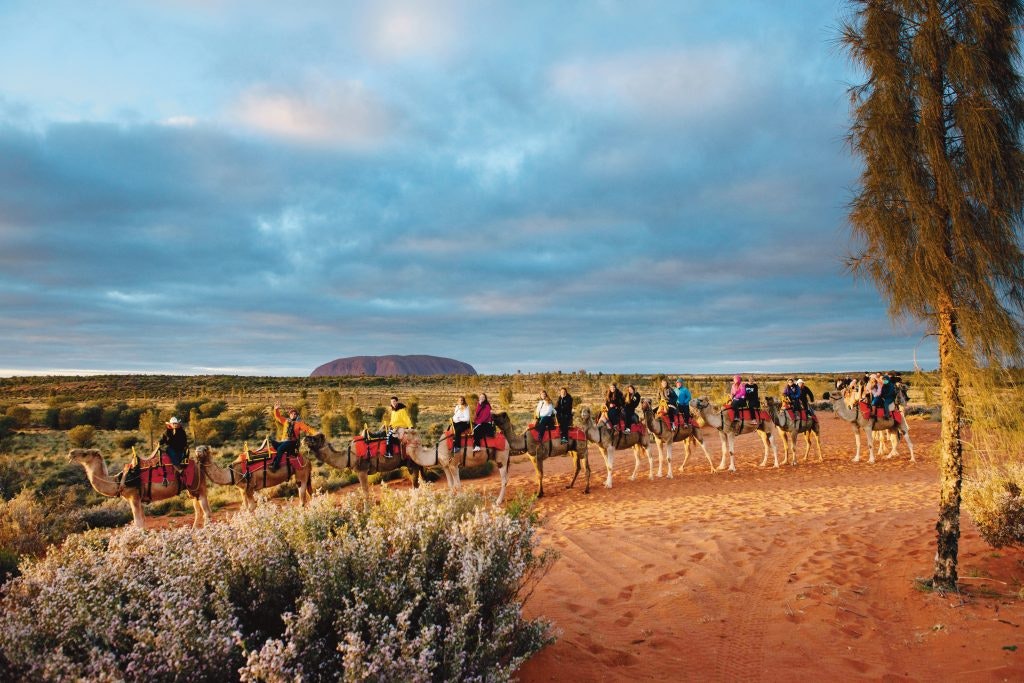
Rustic Pathways students take a camel ride near Uluru.
Uluru is also known for its dedicated sunrise and sunset viewing areas. Viewing areas are located so that the sun’s rays hit the rock formations directly, making them appear to change color. Early in the morning, you can ride camels around Uluru to see the pinks and purples that appear as the sun rises.
Related: Everything You Need to Know About Australia
4. Kata Tjuta – Valley of the Winds
Formerly known as the Olgas, the 36 domes of Kata Tjuta cover more than 20 square kilometers and rise up to 546 meters above the surrounding plain.
The name ‘Kata Tjuta’ is a Pitjantjatjara term, a dialect of the Anangu people, that means ‘many heads’. This rock formation is an important site for Anangu men and the stories the indigenous people tell about this site are generally not shared with outsiders to protect sacred information.
There are several paths you are allowed to take such as the Valley of the Winds walk. A full circuit takes you down into the valley and creek beds of the Kata Tjuta domes. On the walks, the Anangu people ask that visitors not take photos or videos of Kata Tjuta. They believe there are aspects of Kata Tjuta that should only be experienced in person.
5. Kings Canyon
Kings Canyon, also known as Watarrka, is a canyon in the Northern Territory of Australia. This canyon features 300 meter high sandstone walls, palm-filled crevices, and views that stretch across the red desert. Watarrka National Park also offers a variety of walking trails, tracks, and camel tours if you wish to explore the red dunes.
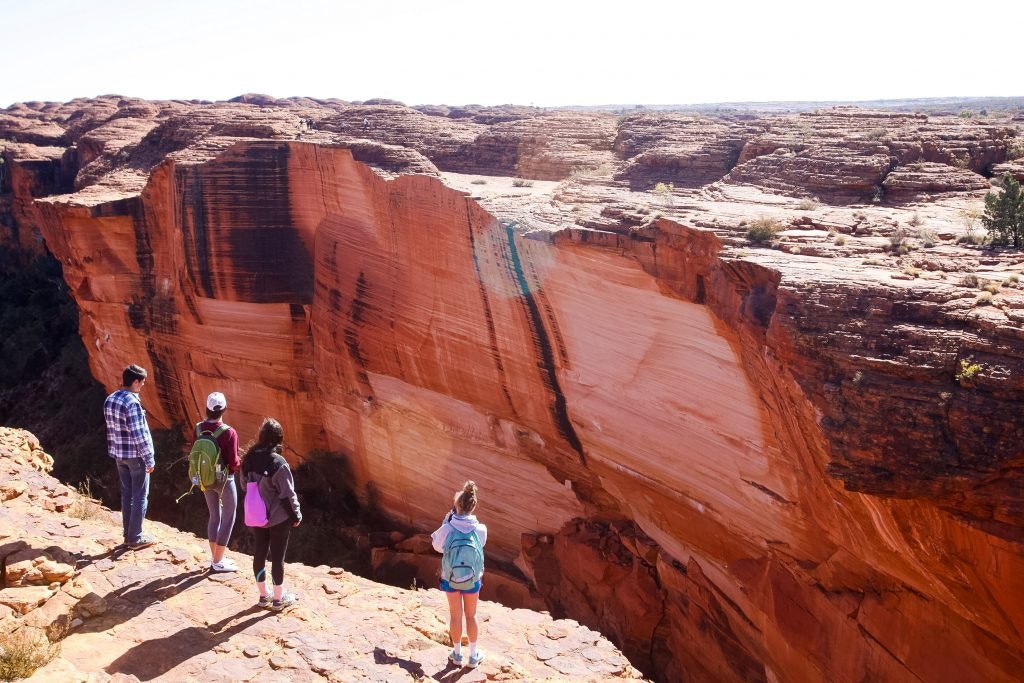
Rustic Pathways students view Kings Canyon. Copyright: © 2015 Rustic Pathways
The Kings Canyon Rim walk is a 6km circuit that takes you down into the Garden of Eden, a rockhole surrounded by ancient plant species such as the MacDonnell Ranges cycads. You can see tropical pools and view beehive rock formations in an area named the Lost City.
Alumnus Pablo Ruiz Segura, who went on our Seven Wonders program, shared, “If I had to put one moment on top, it would definitely be spending hours watching the clear blue sky in the Australian desert with other people just talking, laughing and playing.”
6. Great Barrier Reef
If you fly over to tropical Far North Queensland, the city of Cairns offers a completely different side to Australia. From Cairns, you can embark on a snorkeling or scuba diving excursion to explore the Great Barrier Reef, one of the Seven Natural Wonders of the world.
The Great Barrier Reef is the world’s largest coral reef system and home to over 1500 species of tropical fish. The reef system is made up of 3000 individual reefs and 900 islands and stretches for over 2,300 kilometers.
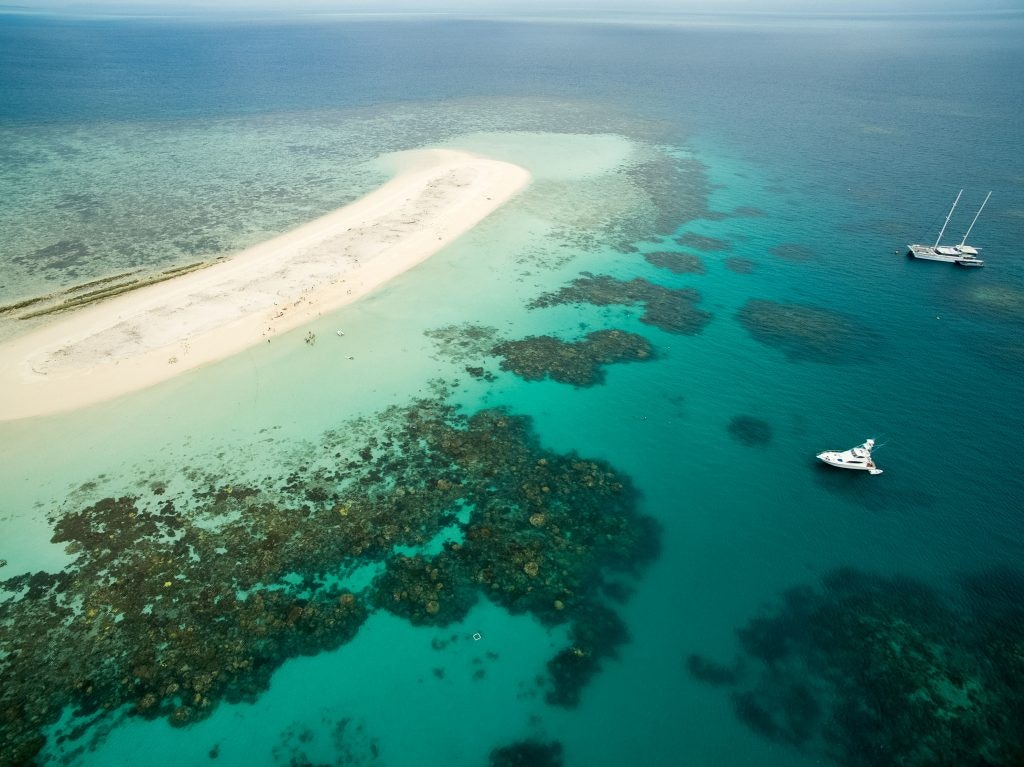
Copyright: Rustic Pathways
The Great Barrier Reef Marine Park Authority considers the greatest threat to the Great Barrier Reef to be climate change. Climate change causes warming ocean temperatures and leads to coral bleaching which makes corals more susceptible to disease. Once corals die, the reefs rarely come back.
Conservation efforts have increased to protect the Great Barrier Reef from severe bleaching, help them adapt to warmer temperatures and actively rebuild resilient reefs where necessary.





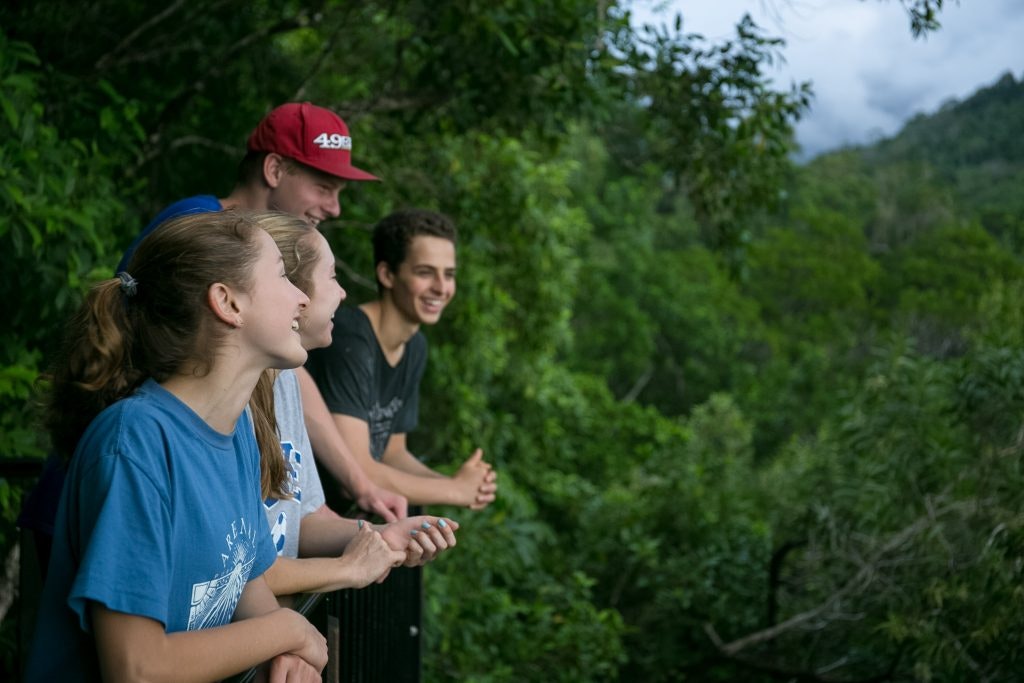
 Southern Cassowary (Casuarius casuarius)
Southern Cassowary (Casuarius casuarius)